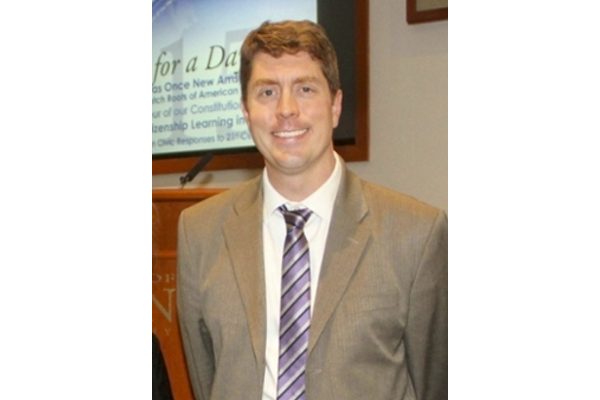An Interview with Historian Dr. David Dzurec of the University of Scranton

The University of Scranton is a private Catholic and Jesuit institution of 3,729 undergraduate students located in Scranton, Pennsylvania founded in 1888. The History Department engages with the public through its connectin to local history. The History Department “seek[s] to provide our students with an understanding of the significant institutions, events, trends and individuals that have shaped that experience, thus helping them to develop a better understanding of contemporary cultures and the human condition.” I spoke with Dr. David J. Dzurec, the History Department Chair at the University of Scranton, about the University’s involvement with the local area. He discussed the department's emphasis on service learning how they use local history inside the classroom.
Q: What is the value in local history?
A: Local History helps provide a context and an immediate importance for the work and the research that our students are conducting. Even in a survey level class, integrating aspects of local history or connections to the region help bring national and world history events home to students. Additionally, the larger Scranton community benefits greatly from know its own past. Ideally, one of the jobs of the history department at the University of Scranton is to help bring these things (student work and the larger community) together.
Q: How are students engaging in the classroom with local history through service-learning?
A: At the University of Scranton, in addition to numerous internships, our history students have engaged in a variety of projects within the community and in coordination with local, state, and national institutions. Our students have conducted research and helped organize projects with the Lackawanna County Historical Society (which is right on campus), the Weinberg Library’s Special Collections, the Steamtown National Historic Site, and the Pennsylvania State Library. Students in our “Craft of the Historian” course worked with several of these institutions to digitize some of the Scranton family papers. This project not only helped the students develop digitization and preservation skills, but it also allowed them to connect to the history of the local community (especially since the University’s campus is built in part on the Scranton family estate). In another course, students studied the process of conducting oral history interviews and applied those skill by interviewing members of the Latinx community in Scranton. These interviews were employed in research projects as part of our “Digital History” course. Another ongoing project in our digital history class builds on student work researching the history of coal mining in the Scranton region.
Q: How is civil learning relevant to an understanding of history?
A: Understanding local history helps students develop a context for global and national historic events. When students are able to connect moments like the “Square Deal” to the Lackawanna County Court House in downtown Scranton it adds a level of understanding they might not otherwise have had.
Q: Are there any specific documents that the University of Scranton possesses of historical significance either to the local area or beyond? If so, how do students and the public get to engage with these resources?
A: The University’s Special Collections include some of the Scranton family papers (part of which one of our classes worked to digitize), the Congressional Papers of Joseph McDade, Reports from the Pennsylvania Mining Commission, and the Passionist Historical Archives. In addition to digitizing some of these special collections, one of our faculty members, Fr. Robert Carbonneau, works with students to make use of the Passionist Archives in their research and Fr. Carbonneau helped to organize a special exhibit of these documents. A number of our classes have conducted research in the various collections at the University and many of our students have completed internships working with Librarian Michael Knies in historic preservation.
Q: What do you see as Scranton’s broader role in history? How does it contribute to any other historical narratives?
A: Scranton’s long history of mining (specifically Anthracite Coal) and the wave of immigrants who came to the region to work in those mines, place the history of Scranton squarely in the center of the history of the United States in the early 20th Century. Most notably the Anthracite Coal Strike of 1902, serves as a critical moment in the history of industrialization, labor history, and TR’s “Square Deal.”
Q: How do you hope to expand and broaden the History Department’s public engagement?
A: Local history has been come a rich source of material for our students as they develop their research skills and learn about the variety of tools available to them in the research and writing process. Going forward I hope to see our students continue to tell the stories of Scranton’s immigrant community, whether they arrived in the early 20th century or the early 21st century, in a variety of formats (from classroom presentation to digital projects). I would also like to see us expand on the work we have already done to develop additional projects in conjunction with some of our local historic sites like the Lackawanna County Historical Society and the Steamtown National Historic Site. I also think our students would benefit from the development of a new digital history lab, that would allow them to develop projects based on their local historical research that could be made widely available on the web.